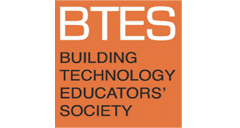Matter, Making, and Testing: Designing with Next Generation Precast Concrete
Abstract
Precast concrete panel design, fabrication, and assembly are the subject of a seminar being conducted at the University of Pennsylvania’s Stuart Weitzman School of Design over the last four academic years. This seminar focuses on precast concrete and specifically it’s complex history, materiality – how it is manufactured and the logistics of its assembly - and cultural affects through both its traditional uses within the constructed urban environment as well as new approaches to building typologies such as housing. Through a strategic partnership with the Precast/Prestressed Concrete Institute (PCI) and Northeast Precast, based in Vineland, New Jersey, students have gained access to places where precast concrete is made, formed, and put into action. The seminar has yielded unique opportunities for collaboration, where student teams work directly with project managers and engineers in the design and fabrication of formwork and work with these experts at the precast plant in the actualization of panels. The collaboration, however, is not one-way, as students engage in three-dimensional design software and imagine creative production techniques to develop their panels, finding ways of transmitting their goals electronically to the plant experts. The resultant workflow utilizes advanced Building Information Modeling (BIM) and direct-to-fabrication schemas. Students are present at the facility and participate in the fabrication and assembly of formwork, as well as the pouring of one panel. Unique to the seminar is the production of full size, as opposed to scaled, panels that address multiple formal and performance characteristics present in precast panel design. A primary interest of the seminar is to address the need in design and construction to limit material waste, supporting a more sustainable mode of both design and object production. Students are constrained materially to (2) 5’x10’ stainless steel sheets they may use to construct a single formwork that must be re-used to produce two discrete 4’x8’ precast panels. The process yields a two-way workflow between students and the precast project managers and engineers and allows for a bi-directional knowledge exchange, making the production process instructional for all parties as well as fun. This paper will address the educational objectives of the seminar, as well as introduce a case study produced by students in the fall 2021 semester. That project further explores surface and formal variation across the two panels by inserting voids into the formwork and varying the material expression in different zones of each panel.
Keywords: Precast Concrete, Education, Density, Building Information Modeling, Digital Workflows, Sustainability, Collaboration, Shop Drawings
How to Cite:
Garber, R. J., Engelberger, R. & Knust, L., (2023) “Matter, Making, and Testing: Designing with Next Generation Precast Concrete”, Building Technology Educators’ Society 2023(1), 195-202. doi: https://doi.org/10.7275/btes.1952
Downloads:
Download PDF
